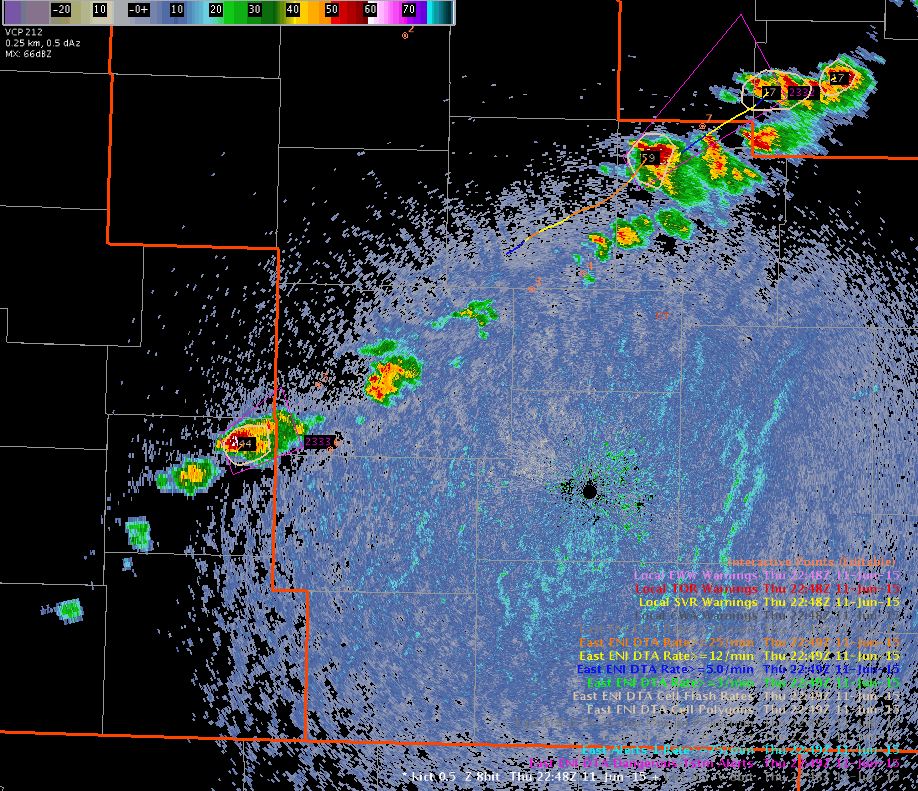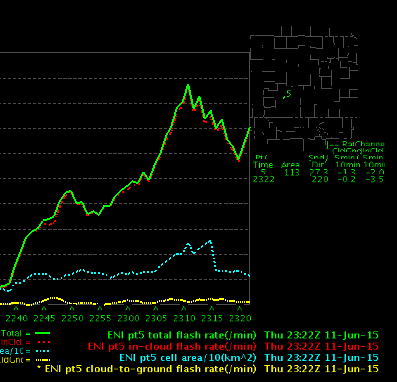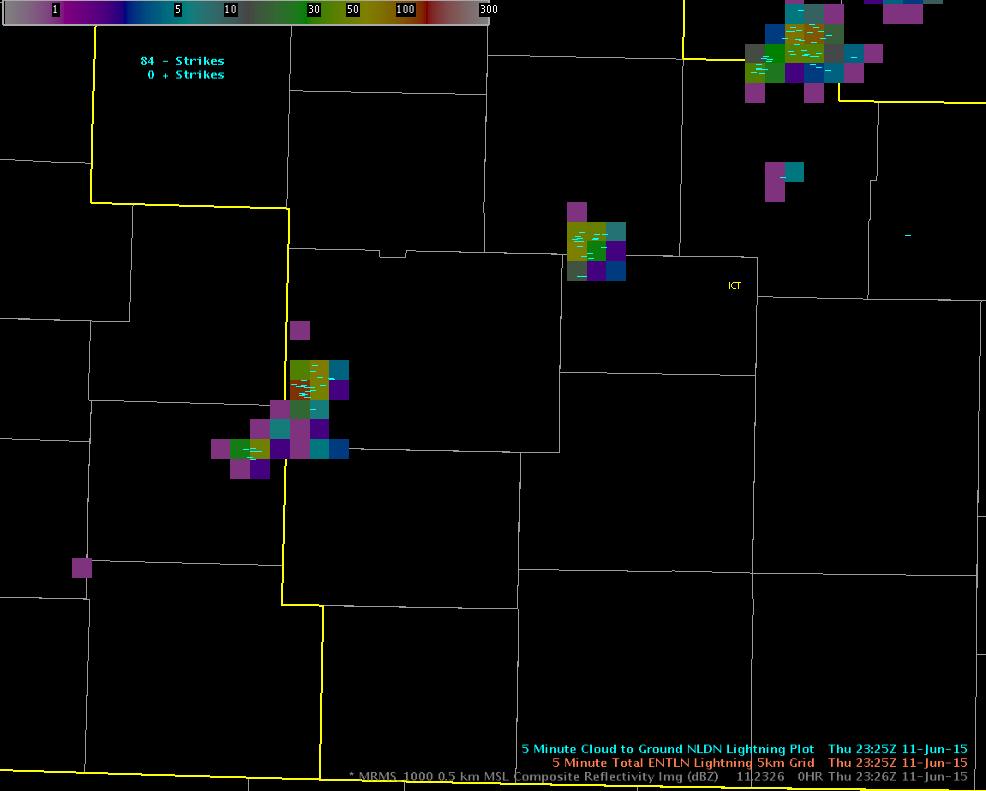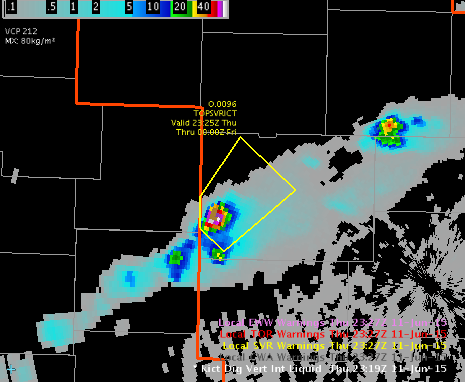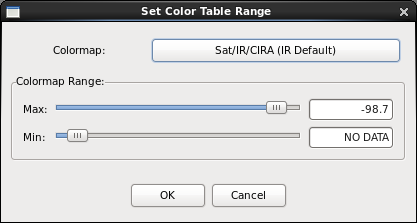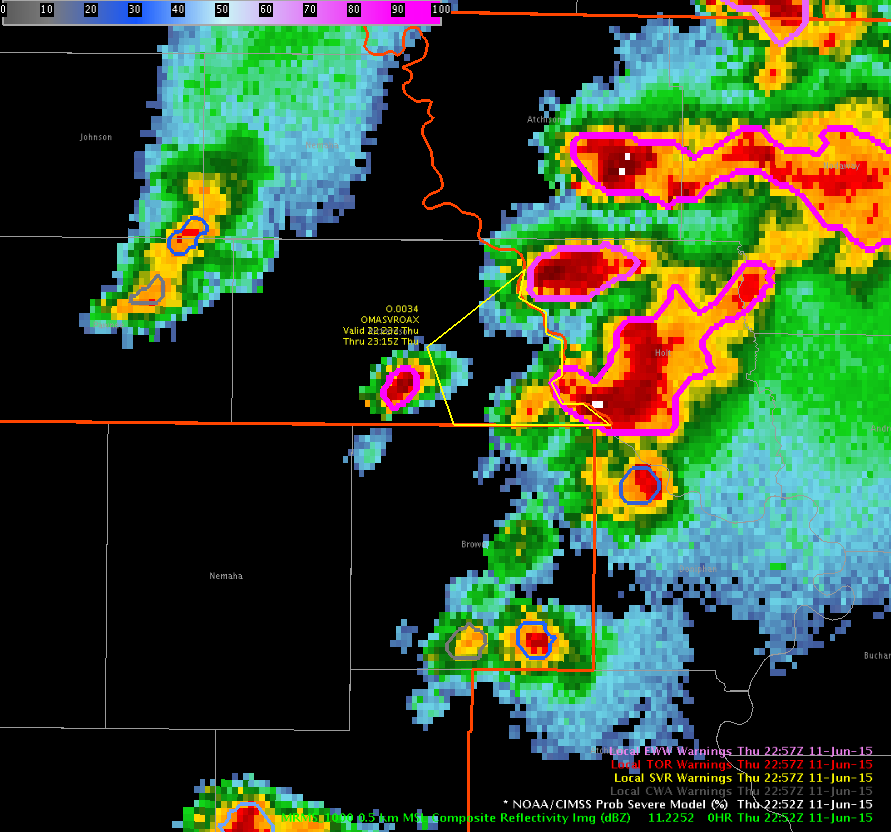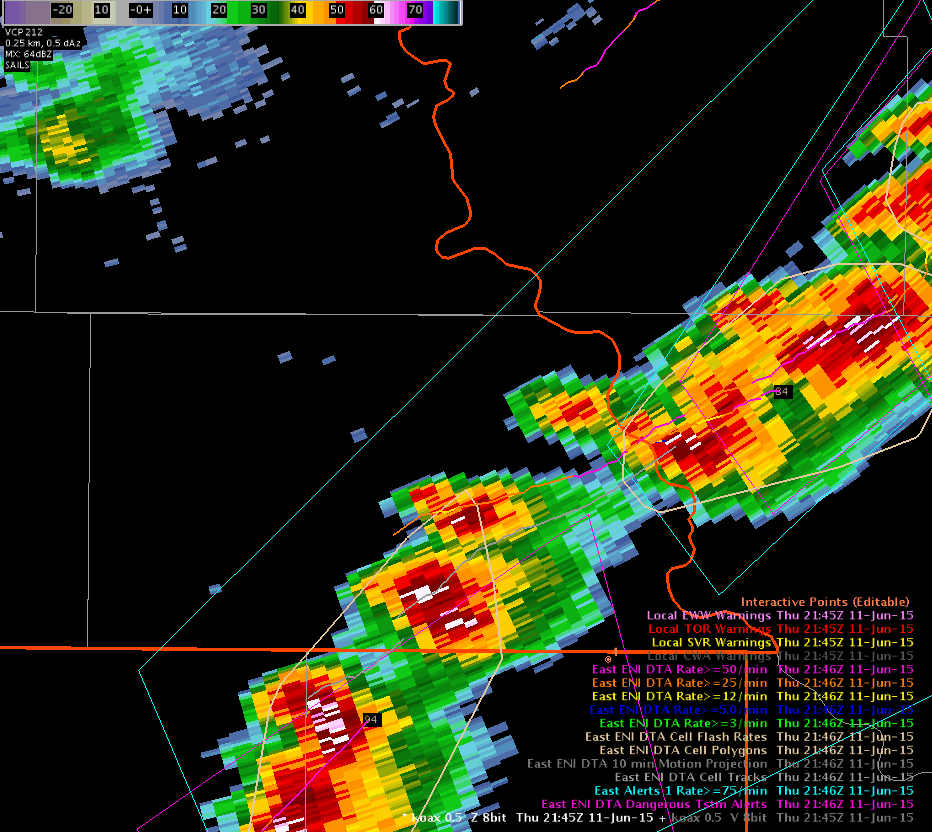This amazing supercell has persisted since just after 1900 UTC and its now 2330. Used Using All Tilts Base Data since FSI is not available to us. The radar base data is still the goto basis for warnings, while algorithm output can increase confidence or alert or provide a “safety net” if storms develop in areas you might not be monitoring or while you are busy issuing warnings. Can you see the NOAA seagull signature? MrSnow/Shasta
Category: General
General Information and News
Cell split in Reno county Charley
SVR for Reno County Charley
Integrating SRSO Visible imagery with 1 minute total lightning data
In the images below the SRSO 1 minute imagery and 1 minute total lightning data were integrated to provide a visualization/conceptualization of the evolution of the storms updraft location and distribution of cloud flashes (yellow circles) and cloud to ground strikes (dark blue +/-). We were able to save the editor display, open up the xml file in the localization perspective and change the frame count from 65 to 120 to get a longer loop. You can then open up the editor display for later use.
Also used the SRSO IR images, used the interpolate image on the imaging option to smooth out the IR. The Change Colormap option to adjust the color scale to better enhance the cold top of the storms to fit today’s situation. I also overlaid the GOES-R Pseudo Geostationary Lightning Mapper (PGLM) Surface Flash Extent Density product to monitor lightning along with the 1 minute ENTLN data.
Click on the images to see the animation. MrSnow/Shasta
Strong PGLM surge leads to warning
A strong PGLM surge was noted just before issuing a warning. A strong to severe thunderstorm developed over the southern suburbs of Denver. The cell had a history of nickel sized hail over south Denver. An boost came in the form of an outflow boundary coming in behind the cell. A warning was issued. Unfortunately, it appears that the Lightning Jump algorithm was a no-show just before the warning was issued.
-Shasta/Mr. Snow
CI performing very well today in CO
Convective Initiation product (CI) correctly showed increasing values just south of the Denver Boulder area from 1600 to 1800 UTC 11 June 2015. Values increase from 36 to near 60% in the general vicinity of the storms that developed in the Pueblo, CO area. This gave about 30 minutes of lead time to the first lightning strikes around 1715Z. It would be nice to get CI output at 1-5 minute temporal resolution to match RSO/SRSO. We had outflow boundaries evident in the SRSO imagery but had to wait 15 minutes for CI updates. Below are a series of images as the storms were developing showing the CI, the MRMS Composite Reflectivity, Visible satellite, PGLM 6min summary, 0-200km Lighting Jump, 15minute ENI 8km interpolated lighting grid and cloud to ground strikes. The lightning jump showed up to 2 sigma jumps at 1729 UTC. MrSnow/Shasta.
– CI is/was available with RSO! – BL



